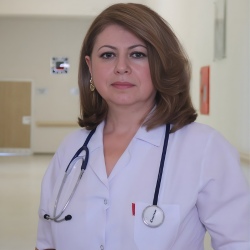
Tukaz Mammadova
Scientific Research Institute of Pediatrics named after K.Y. Farajeva, AzerbaijanPresentation Title:
Mathematical modeling of sepsis diagnosis
Abstract
The aim of this study was to identify markers and develop a mathematical formula for the early diagnosis of NEC with septic complications (NEC + Sepsis). The design of scientific work is presented by prospective studies. The study involved 100 full-term neonates diagnosed with NEC, with a gestational age of 37-42 weeks. Demographic and clinical data were collected from patients with relevant abdominal and systemic symptoms. Using ROC (Receiver Operating Characteristic curve) curve analysis, the correct parameters of the model were determined. The ROC curve analysis was used to calculate the specificity and sensitivity of nitric oxide (NO) for the early diagnosis and differentiation of NEC with sepsis and severe NEC without sepsis. The highest sensitivity and specificity values were observed with the use of numerical data for NO (92.86%; 93.98%). Among 83 patients with NEC without sepsis, higher levels of NO were observed compared to 17 patients with septic complications. Serum NO levels in patients with sepsis were significantly lower compared to those in patients even at stage I NEC. By identifying the low threshold values of Nitric Oxide (NO <37.80 μmol/L), a mathematical formula was developed for the early detection of septic complications of NEC in full-term newborns. Using the developed formula, the septic process can be identified in a timely manner; in this case, if p > 0.368, sepsis should be considered. The accuracy rate of the model is 87.00%. Based on the results of our study, we can say that NO is a new biomolecular marker for early diagnosis of sepsis in patients with NEC. Extreme low values of serum concentrations of NO observed in NEC + Sepsis can be used as predictor of sepsis early diagnosis and differentiation from diseases with similar symptoms.
Biography
Tukaz Mammadova has completed her PhD at Azerbaijan Medical University. She has worked as a neonatologist for 26 years and has been involved in scientific research for 1 6 years at the Scientific Research Institute of Pediatrics named after K.Y. Farajeva. She has approximately 37 publications that have been cited and has presented at 14 scientific conferences. Additionally, she holds around 23 diffè rent certificates.

